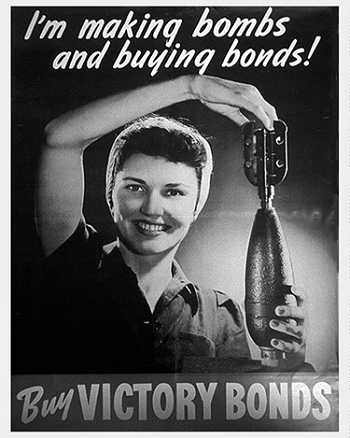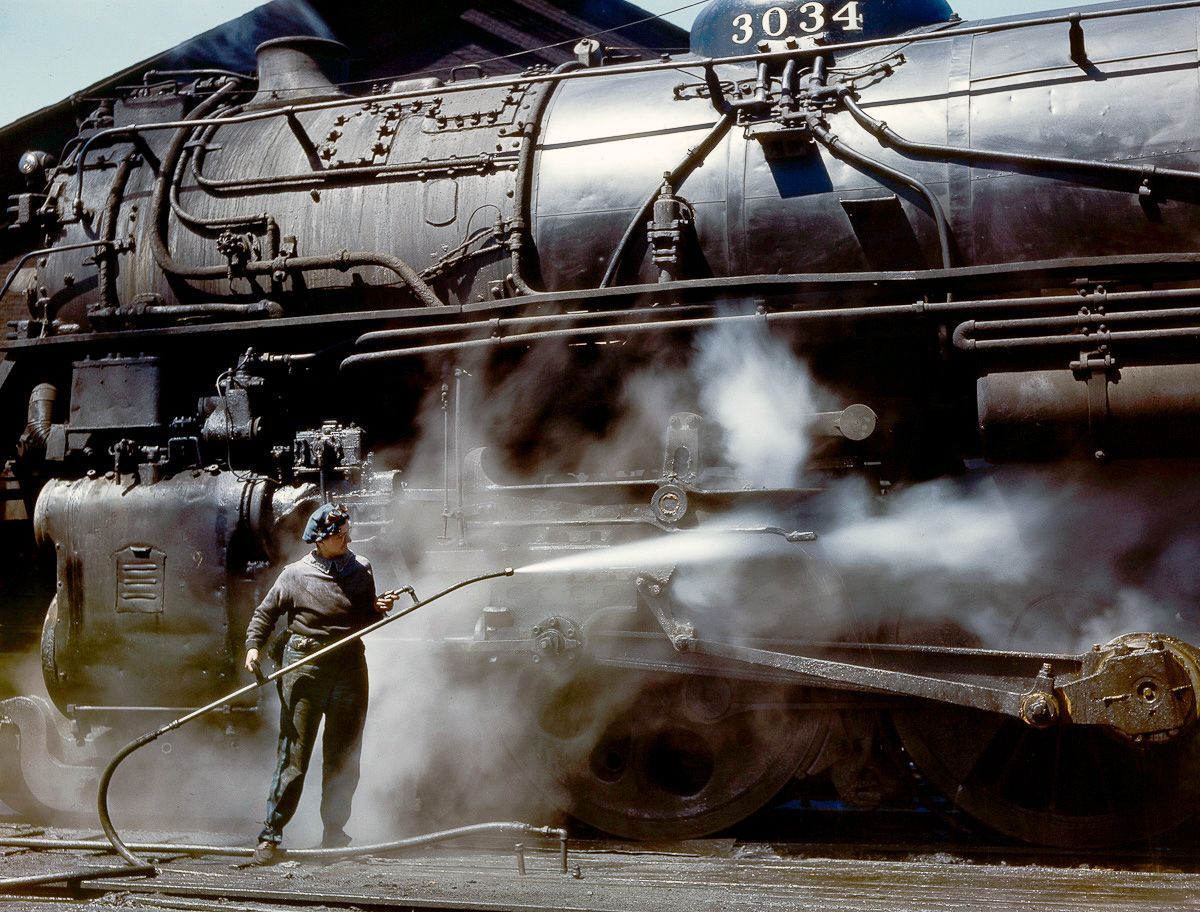The incredible and magnificient story of Alco during War
The incredible and magnificient story of Alco during War
ALCO referring to World War Two as their third war? I don’t know, ALCO didn’t come into existance until 1901 when seven locomotive builders merged to form it. I’m assuming they’re referring to the Schenectady Locomotive Works, one of the seven and the oldest, going into business in 1848. It certainly was a “Big Shop.”
No matter, ALCO did a hell of a job during WW2, as did all American industry.
For the War, in another Country.
From Alco-GE, December 1941. 69824.
https://ingeniumcanada.org/archives/details/MAT-03059
Canadian Arsenals No. 5. Montreal.
Thank You.
It is truly astonishing what Alco did in WWII.
Thousands of tanks, thousands of guns, thousands of several hundred other items from Scotch boilers to Battleship gun turrets roller bearings. Changing production on the fly. After building 6,000 Sherman tanks they had to switch to steam locomotives, over a thousand of them. Designing and building a locomotive for Iranian Railways in harsh conditions to supply Russia and augment Murmansk convoys. You could say Alco saved Stalins sorry butt.
Not only all that and so much more untold, they even used tens of millions of their own money trusting their know how and workforce.
I simply have a hard time getting my head around the amount of steel and other materials that had to be delivered and all the logistics of that during wartime in a already busy nation. It must have been an incredible place with incredible departments from design to accounting.
Lets not forget the streetcars, interurbans and commuter trains that brought shift after shift a workforce to war around the clock.
And…all this without computers and instant communication. Could our societies do this today at the drop of a hat without those aids?
The greatest generation ever.
Were a war requiring heavy manufacturing abilities in mass quantities to break out today - the Western Hemisphere countries would be defeated before anything could be ramped up.
We don’t posses a steel industry, I’m not so sure what kind of Aluminum industry still exist, machine skills outside of CAD/CAM by and large no longer exist and I have my wonders how people are being trained in the CAD/CAM enviornment. Destroy Cell towers and communications will grind to unreliability.
One thing WW II tapped in the Western Hemispher




Any war against a major power would be a “run what ya brung” affair. Weapons are too sophisticated to be mass produced by manual labor.
Presuming that the ‘first punch’ is not a knock out - additional weapons will ned to be produced and produced in quantity. What will need to produce those weapons in quantity and in time? Increased level of raw materials and a increased level machine work and assembly, will at least create needs for the ‘robots’ that do it all. Will the robots build themselves? Will the Process Controls control all the aspects of increased levels of materials required. Will AI destroy the human race?
In today’s world, it’s more important where your electronics are manufactured. They are the expensive and time consuming element of military equipment. Every first world country is in the same predicament. It really doesn’t matter how many you can produce if you can’t afford to buy in quantity.
During WW1, Baldwin produced 5 rail mounted 14 inch naval rifles, going from order to deployment in under 9 months. Inital range firng in France placed three rounds within a 150 foot square at 14 miles.
A couple of things helped the US during WW2. First was that the machine tool industry was jump started by orders from France and the UK ca 1938 as the “high speed” cutting tools made older machine tools obsolete. Second the machine tool industry made a push to get people trained on using machine tools in the 1940-41 time period, so there was a trained workforce when fighting started.
What was unfortunate for Alco was that their manufacturing focus during WW@ had little to do with improving their diesel engines. EMD’s engines were widely used by the USN, so there was a concerted effort to make improvements on the 567. Had the 244 been as reliable as the 567, the Alco PA would have dominated the post-war passenger market and the freight locomotives would have been a lot more competitive with the EMD products.
Speaking of Service to the Nation it is Mikes birthday today!
| Trouble viewing this message? Click Here |
|---|
What a lot of railfans and historians so easily forget today is just how many changes were made to the 567 in the years after its introduction, the very early versions of that engine were not all that reliable. There are very few unaltered 567 U, V, A and B engines left running today.
It took until the C-block redesign (entered production in 1953) for the 567 to become a highly reliable machine.
Happy birthday Mike! Thanks for your service, soldier!
But it was the 567B that the railroads bought instead of the 244. The 567B had most of the improvements in the 567C apart from the water jackets on the cylinder liners which were fed from “water jumpers” from piping rather than water jackets in the crankcase itself.
The problem being addressed in the 567B was leakage of cooling water past seals into the cylinder through the inlet ports where the piston was below the inlet ports when the engine was stopped and cooling down.
A simple solution to this was to leave the engine idling and keeping the locomotive on the road as much as possible. The Victorian Railways addressed the problem by removing the shutdown button and only permitting mechanics rather than loco crew to shut down the locomotive. I think the Commonwealth Railways had much the same idea. There wer
Do you happen to remember the change – I recall it as being a firing-order change – that was necessary to stop the crank breakages on the 16-cylinder engines? As well as what was involved, other than a new cam, to implement that?
I hadn’t heard that the firing order was changed.
It seems quite likely. EMD has done that twice at least, the 8-567C to the 8-567CR and the 12-710G3A to the 12N-710G3B…
Eugene Kettering’s ASME paper on the 567 (found at Utah Rails) has an excellent diagram of torsional vibration against engine speed showing the eight throttle notches which explains a lot…
Steinbrenner talks about the problems with the 12-244 and the need to replace many crankshafts but this is attributed to faulty manufacture, (including an entire batch of cast crankshafts). Another cause was insufficient rigidity in the lower crankcase where the bearing supports could become misaligned.
All of these could apply to the 16-244 magnified by the longer crankshaft. But a change in the firing order is also possible, I just hadn’t heard of it.
I expect that the significant changes would have been incorporated in the 2250HP engine, the final versions being 2400HP just before the 251 replaced it.
Peter
[quote user=“Miningman”]
Speaking of Service to the Nation it is Mikes birthday today!
| Trouble viewing this message? Click Here |
|---|
M636C–From Mike:
for Peter, thanks for kind words, and
https://archive.org/details/in.ernet.dli.2015.206734/page/n939
https://www.youtube.com/watch?v=hyQo6RIu5F8
: